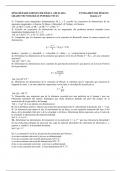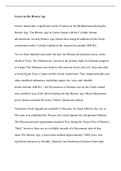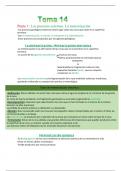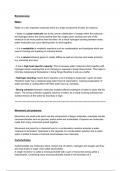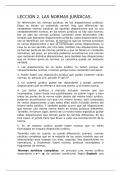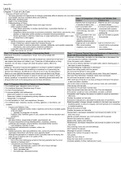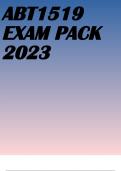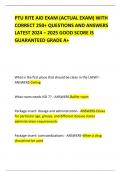RESEARCH WRITING.
FOREIGN LANGUAGE
ANXIETY
AMSTERDAM UNIVERSITY OF
APPLIED SCIENCES (AUAS)
FACULTY OF EDUCATION
ENGLISH TEACHER TRAINING
PROGRAMME
FROUKJE WINKELHORST
15-01-2021
,TABLE OF CONTENTS
INTRODUCTION...................................................................................................2
METHODS............................................................................................................4
FINDINGS.............................................................................................................5
ANALYSIS.............................................................................................................8
CONCLUSION AND RECCOMENDATIONS......................................................10
ANNOTATED BIBLIOGRAPHY..........................................................................11
REFERENCE LIST.............................................................................................14
APPENDIX..........................................................................................................15
1
, INTRODUCTION
It is widely assumed that the first language (L1) of a learner could be a crucial aspect that
affects learners’ anxiety in the foreign language classroom, as being exposed to a language
more often, results in familiarization with this certain language (Tanveer, 2008). According to
Hashemi (2011), anxiety is defined as a feeling of apprehension, tension and nervousness
associated with, for instance, muscle tension and avoidance behaviour. However, anxiety is
categorised in three types: trait anxiety, state anxiety and situation-specific anxiety (Hashemi,
2011), where trait anxiety is linked to personality traits, whereas state anxiety can be defined
as a response to an anxiety-provoking stimulus, such as an exam, and situation-specific
anxiety refers to a specific situation, such as public speaking. Furthermore, other than the
learners’ attitude and motivation, anxiety has been found to be one of the most negatively
influential affective factors to their process of learning (Park & Lee, 2005). According to Cheng
(2001), this anxiety emerges as an issue of increasing prominence. However, this foreign
language anxiety (FLA) has been found to have a frequent occurrence amongst learners
learning a new language (Hashemi, 2011).
FLA is said to be negatively related to the learners’ performance in class, as the feeling of
apprehension prevents them from proficiently learning this foreign language (FL). This
experience of distress undoubtedly stems from the learners’ lack of confidence (Hashemi,
2011), due to their fear of making mistakes and appearing incompetent in the consideration of
others (Horwitz, 1986). In order to cope with this agony, it is imperative to acknowledge to
what extent L1 affects FLA, as unfamiliarity with the FL has been found to be provoking for
FLA (Tanveer, 2008). Therefore, the research question of this presented article is: To what
extent does the learner’s L1 affect his/her FLA when learning English in an intermediate
vocational education classroom at ROC-TOP in Amsterdam?
This inquiry has two sub-questions:
- What types of anxieties are experienced by the learners learning English as their L2 in
this FL classroom?
- Which L1 experiences the highest degree of anxiety with learning English as their L2 in
this FL classroom?
The primary hypothesis of this research is that the learner’s L1 could be a major influential
affective factor to his/her FLA, as “A common observation is that bilingual immigrant children
perform worse in their new (or additional) language than their monological peers in language
2
FOREIGN LANGUAGE
ANXIETY
AMSTERDAM UNIVERSITY OF
APPLIED SCIENCES (AUAS)
FACULTY OF EDUCATION
ENGLISH TEACHER TRAINING
PROGRAMME
FROUKJE WINKELHORST
15-01-2021
,TABLE OF CONTENTS
INTRODUCTION...................................................................................................2
METHODS............................................................................................................4
FINDINGS.............................................................................................................5
ANALYSIS.............................................................................................................8
CONCLUSION AND RECCOMENDATIONS......................................................10
ANNOTATED BIBLIOGRAPHY..........................................................................11
REFERENCE LIST.............................................................................................14
APPENDIX..........................................................................................................15
1
, INTRODUCTION
It is widely assumed that the first language (L1) of a learner could be a crucial aspect that
affects learners’ anxiety in the foreign language classroom, as being exposed to a language
more often, results in familiarization with this certain language (Tanveer, 2008). According to
Hashemi (2011), anxiety is defined as a feeling of apprehension, tension and nervousness
associated with, for instance, muscle tension and avoidance behaviour. However, anxiety is
categorised in three types: trait anxiety, state anxiety and situation-specific anxiety (Hashemi,
2011), where trait anxiety is linked to personality traits, whereas state anxiety can be defined
as a response to an anxiety-provoking stimulus, such as an exam, and situation-specific
anxiety refers to a specific situation, such as public speaking. Furthermore, other than the
learners’ attitude and motivation, anxiety has been found to be one of the most negatively
influential affective factors to their process of learning (Park & Lee, 2005). According to Cheng
(2001), this anxiety emerges as an issue of increasing prominence. However, this foreign
language anxiety (FLA) has been found to have a frequent occurrence amongst learners
learning a new language (Hashemi, 2011).
FLA is said to be negatively related to the learners’ performance in class, as the feeling of
apprehension prevents them from proficiently learning this foreign language (FL). This
experience of distress undoubtedly stems from the learners’ lack of confidence (Hashemi,
2011), due to their fear of making mistakes and appearing incompetent in the consideration of
others (Horwitz, 1986). In order to cope with this agony, it is imperative to acknowledge to
what extent L1 affects FLA, as unfamiliarity with the FL has been found to be provoking for
FLA (Tanveer, 2008). Therefore, the research question of this presented article is: To what
extent does the learner’s L1 affect his/her FLA when learning English in an intermediate
vocational education classroom at ROC-TOP in Amsterdam?
This inquiry has two sub-questions:
- What types of anxieties are experienced by the learners learning English as their L2 in
this FL classroom?
- Which L1 experiences the highest degree of anxiety with learning English as their L2 in
this FL classroom?
The primary hypothesis of this research is that the learner’s L1 could be a major influential
affective factor to his/her FLA, as “A common observation is that bilingual immigrant children
perform worse in their new (or additional) language than their monological peers in language
2



